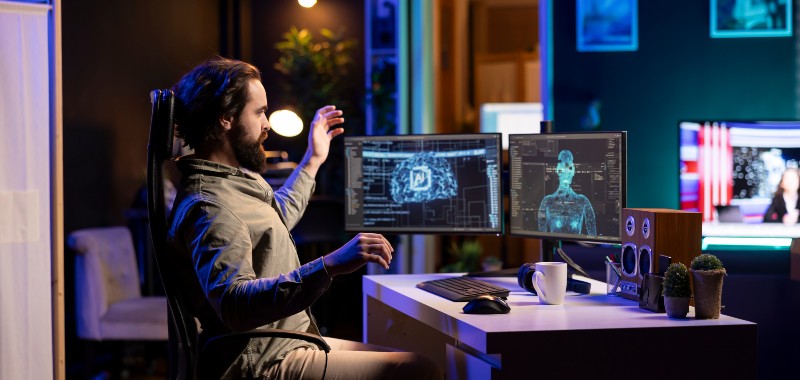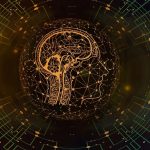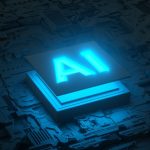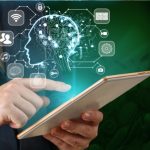
Copyright in artificial intelligence: who is the author of AI-generated creations?
The development of AI has changed content creation in various areas, from art to literature, causing a legal and ethical debate about copyright on works. One of the main points is who is the author of a work created by AI?
This article addresses the issue from a legal perspective, considering the regulatory framework in force and all the practices it implies on the protection of copyright.
Concept of author
Spanish legislation on intellectual property, through Royal Decree 1/1996, determines in its article 5 that the author is any natural person who creates a literary, artistic or scientific work. The definition given does not include non-human entities such as AI from the category of author. In addition, the moral right associated with authorship is inherent to natural persons, and in this way, unrenounceable and inalienable.
In addition, Regulation IA 2024/1689 insists on the need for protection on DDFF and on the AI context, although it should be added that it does not give legal personality to AI systems. Therefore, it is understood that AI systems cannot be considered authors in the legal sense.
Authorship attributed to the person using AI
The author of an AI-generated work is often seen as the one who sets up or directs the system, as they bring creative control and human intent to the process. This includes selecting the model, training it, and adjusting parameters to achieve the desired result, reflecting creativity and originality.
The human user defines key objectives, such as style or elements of the work, providing creative direction beyond being an operator. According to case law, as Pablo Maza Abogado points out, copyright can correspond to the user if it significantly influences the result, ensuring protection and legal clarity for works generated by AI.
Works in the public domain
Another perspective holds that works generated exclusively by AI should be in the public domain, as they lack direct human intervention and therefore the originality required under the regulations. In addition, moral rights cannot be assigned to non-human entities.
Considering them in the public domain would allow their free use, promoting innovation and collaboration in education, research and culture. However, this poses challenges for license-based business models, which may require regulatory adjustments to balance interests.
Collective work or corporate responsibility
In the case of companies that develop AI, creations could be considered collective works, according to Article 8 of the Intellectual Property Law, since they are produced under the initiative and direction of a legal entity. This would allow companies to claim exploitation rights, acting as coordinators when setting AI system goals and configurations.
The category of collective work grants economic rights to the legal entity, allowing investments to be protected and the use of the works to be controlled. However, it poses legal and ethical challenges, such as defining the necessary human intervention and avoiding the concentration of creative and economic control in large companies, which could lead to imbalances in the market.
‘Zarya of the Dawn’ case
‘Zarya of the Dawn’ is a graphic novel generated in part through the use of artificial intelligence, which has become a paradigmatic case in the field of copyright. The U.S. Copyright Office decided to dismiss copyright protection over parts of the work created exclusively by AI, based on the argument that copyright requires the intervention of human creativity to be recognized.
This case highlights an international trend that excludes artificial intelligence from being considered a copyright holder. The decision reflects a growing consensus on the need to link copyright protection to originality and human creative input, creating a relevant precedent for future legal controversies in the field of intellectual property.
Legal point of view
The confrontation arises in the authorship of creations made by AI, in the face of:
- Non-existence of legal personality of AI systems: AIs are technological tools and not subjects of law according to current legislation.
- Lack of human creativity: it must meet originality in order to be a copyrighted work, since legal systems require a creative contribution from humans.
- Industry impact: Copyright and licensing can be significantly altered if AI-generated works are in the public domain.
Both the Artificial Intelligence Regulation and the Intellectual Property Law show that any copyright acknowledgment must be linked to a natural or legal person who has the capacity to assume certain responsibility.
For all of the above, various challenges arise regarding the authorship of copyright on artificial intelligence creations.
Authorship in AI-generated creations poses complex copyright challenges. Although AIs are powerful tools for creativity, the current legal framework limits authorship to natural or legal persons. Works generated exclusively by AI could be considered in the public domain or attributed to those who configure and control these technologies.
It is essential to continue developing regulations that balance copyright protection with the promotion of technological innovation, ensuring that ethical and legal principles keep pace with advances in AI.

Letslaw es una firma de abogados internacionales especializada en el derecho de los negocios.







